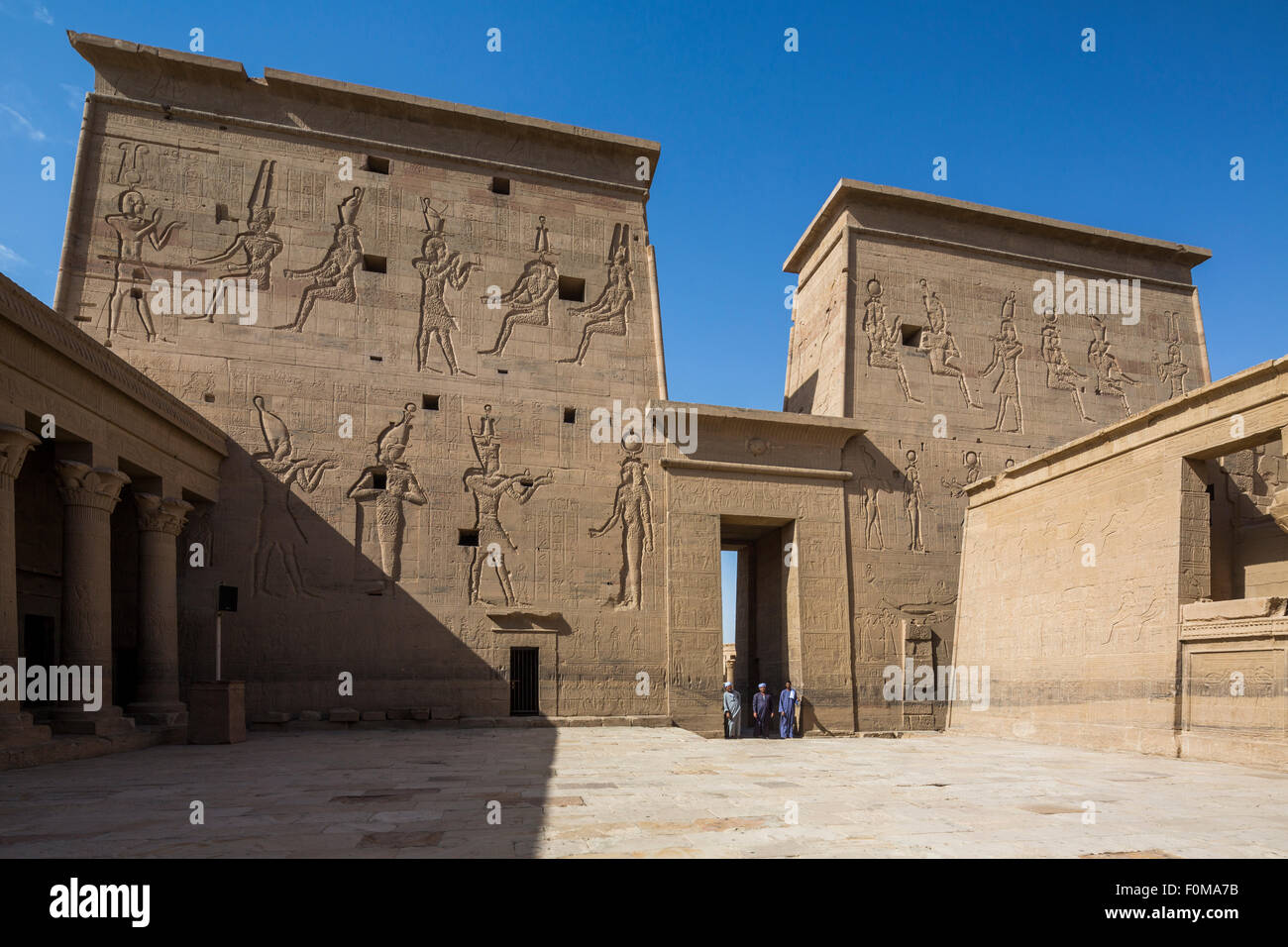pylons, temple of Isis, Philae, Aswan, Egypt

Image details
Contributor:
B.O'Kane / Alamy Stock PhotoImage ID:
F0MA7BFile size:
63.3 MB (3.1 MB Compressed download)Releases:
Model - no | Property - noDo I need a release?Dimensions:
5760 x 3840 px | 48.8 x 32.5 cm | 19.2 x 12.8 inches | 300dpiDate taken:
2 May 2015Location:
Aswan, EgyptMore information:
Philae is currently an island in the reservoir of the Aswan Low Dam, downstream of the Aswan Dam and Lake Nasser, Egypt. Philae was originally located near the expansive First Cataract of the Nile River in southern Egypt, and was the site of an Ancient Egyptian temple complex. These rapids and the surrounding area have been variously flooded since the initial construction of the Old Aswan Dam in 1902. The temple complex was later dismantled and relocated to nearby Agilkia Island as part of the UNESCO Nubia Campaign project, protecting this and other complexes before the 1970 completion of the Aswan High Dam. The most ancient was a temple for Isis, built in the reign of Nectanebo I during 380-362 BC, which was approached from the river through a double colonnade. Nekhtnebef is his nomen and he became the founding pharaoh of the thirtieth and last dynasty of native rulers when he deposed and killed Nefaarud II. Isis was the goddess to whom the initial buildings were dedicated. See Gerhart Haeny's 'A Short Architectural History of Philae' (BIFAO 1985) and numerous other articles which incontrovertibly identify Isis (not Hathor) as the primary goddess of the sacred isle. For the most part, the other ruins date from the Ptolemaic times, more especially with the reigns of Ptolemy Philadelphus, Ptolemy Epiphanes, and Ptolemy Philometor (282-145 BC), with many traces of Roman work in Philae dedicated to Ammon-Osiris.